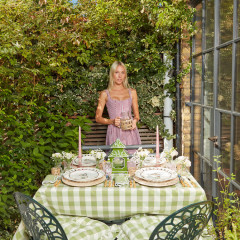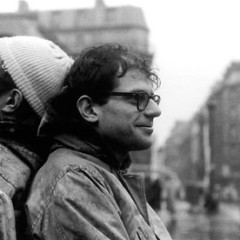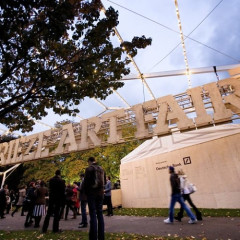 [Image via Telegraph]
[Image via Telegraph]
The current retrospective of this French-American nonagenarian at the Guggenheim, which has already been exhibited in London and Paris finally comes to New York, a city that Bourgeois has considered home for nearly the last seventy years. Bourgeois is the epitome of feminist art, a vocal leader in the empowerment movement for females (long before it was popular, as she often claims).
It is almost hypocritical that she favors materials which tend to evoke femininity in the conventional sense, from delicate glass jars and bottles to diaphanous fabrics and tactile yarn and string. Yet, Bourgeois finds art and beauty in the combination of that which confines the woman to home.
Known for her sculptures of spiders, this new exhibition shows Bourgeois is so much more...
As one climbs the circles of the Guggenheim, one watches a maturation of Bourgeois's oeuvre, beginning with her early renouncement of the technique of painting (Bourgeois gave up painting in the 1940s) and concluding with her head-first dive into sculpture and installation art. The issues Bourgeois tackles in her work remains the same throughout the years, however, her artistic reaction in later years is no longer anger or violence as visible in her early paintings, which evoke German Expressionism (particularly her piece Red Night). Her early work highlights her obsession with her own created notion of the Femme Maison (the slightly disturbing images of a half woman, half house), the nudity serving to highlight her vulnerability in this position. These drawings are not extraordinary by any means, they tend to resemble the scribbles of an mentally disturbed individual. There is a childlike quality to this work, an immediacy in the strong black lines, which seems angsty.
But, all that disappears in her later work. In a sense, Bourgeois tends to mellow in her old age, and the confines of her various cells resonate more powerfully with the observer. There is a quiet rage felt in the dust and decay of her cells, which adds to the complex emotions of a trapped female. Each cell is organized every so tediously, each item holding significant meaning much like a Netherlandish painting by Van Eyck.
Furthermore, there is a blatant sexuality in Bourgeois' artwork. Her wax sculptures, on the one hand look like topological studies, while on the other they are reminiscent of phallic symbols. Then there are the actual penises, I'm thinking especially of the wet-like pink wax one suspended from mid-air. Then there are the sexually infused drawings and sculpture involving a couple caught in a passionate embrace. Her inability to shy away from such topics show how truly revolutionary and youthful this artist truly is. I can't imagine my grandmother looking at such images, let alone create them with a smile.
This is a very important exhibition of a major contender within modern art history and community. Women will feel a special attachment to her work; though men will find it enjoyable as well and I highly recommend everyone attend this retrospective before it's too late.
If you can't get enough of Louise, you might want to catch The Spider, The Mistress and the Tangerine, a film documenting the life of Louise Bourgeois playing at the Film Forum. Tonight is the final day!


.jpg)
.jpg)



.jpg)
.jpg)
.jpg)




